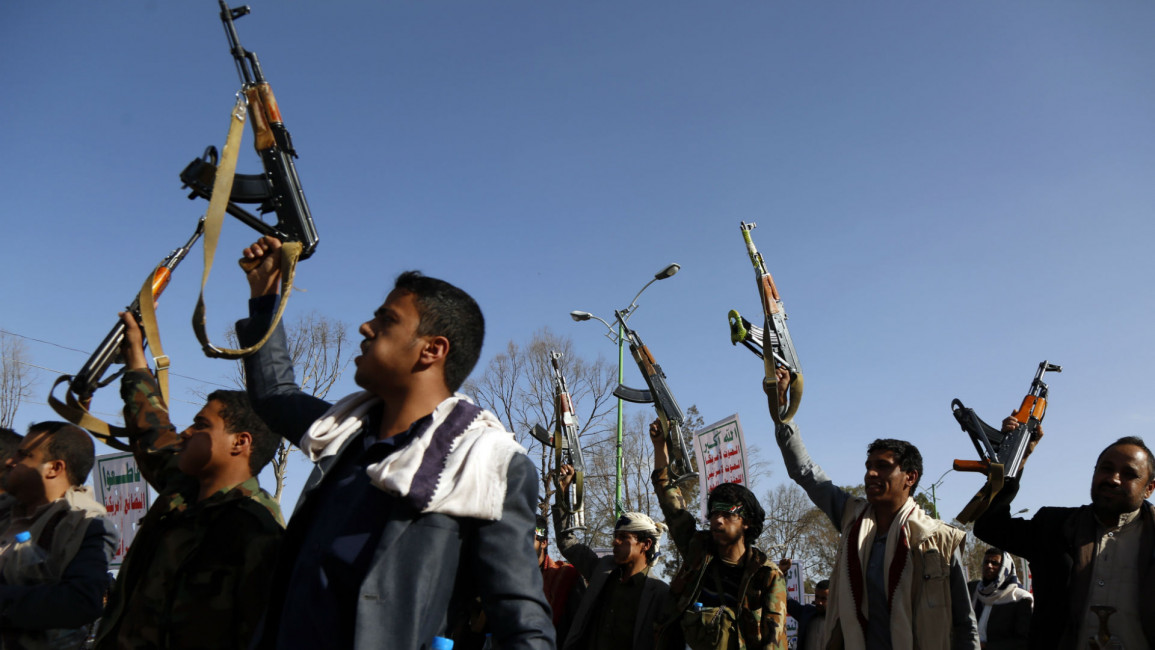Yemen's Houthis receiving weapons similar to Iran's: UN experts
Yemen’s Houthi rebels are receiving parts for drones and weapons, some with technical characteristics similar to arms manufactured in Iran, in potential violation of a UN arms embargo, UN experts say.
The experts said in a report to the Security Council obtained on Friday by The Associated Press that the main smuggling route for both the commercially available drone parts and weapons “seems to run overland from Oman and the southern coast of Yemen, through territory controlled by the government of Yemen, towards Sanaa,” the country’s capital, which is controlled by the Houthis.
The panel said the high-profile seizure Nov. 25 of a dhow in the Arabian Sea carrying anti-tank missiles indicates that sea transport also “continues to play a role” in potential violations of the arms embargo.
The Yemen conflict began with the 2014 takeover of Sanaa by the Houthis, who control much of the country's north. A Saudi-led military coalition allied with Yemen's internationally recognised government has been fighting the Houthis since 2015.
|
||
The conflict has killed thousands of civilians and created the world's worst humanitarian crisis, leaving millions suffering from food and medical care shortages and pushing the country to the brink of famine last year. The UN has warned of a possible famine this year.
“Throughout 2019,” the experts said, “the Houthis and the government of Yemen made little headway towards either a political settlement or a conclusive military victory.”
“In a continuation from 2018, the belligerents continued to practice economic warfare: using economic obstruction and financial tools as weapons to starve opponents of funds or materials,” the panel said, adding that “profiteering from the conflict is endemic.”
In the Houthi-controlled north, the experts said, the rebels continued to consolidate their political and military control, using their “pervasive intelligence services” and brutally suppressing tribal opposition and political dissent.
The panel said it identified a network targeting women who oppose the Houthis, including through the use of sexual violence. In 11 cases, the experts said they documented the arrest, detention, beating, torture and/or sexual abuse of women “because of their political affiliations or participation in political activities or public protests.”
“These women were threatened with charges of prostitution or organised crime if they persisted in activities against the Houthis,” the panel said.
During most of 2019, the panel said, the Houthis continued and intensified aerial attacks on Saudi Arabia using two new weapon systems — a new type of unmanned Delta-design drone and a new land attack cruise missile model.
The experts said they investigated the Sept. 14 high-profile attack on Saudi Aramco oil facilities in Khurays and Abqaiq, where the kingdom’s crucial oil processing plant is. The drone and missile attacks cut into global energy supplies and halved Saudi oil production.
The Houthis claimed responsibility for the attacks. But the panel said it found that “despite claims to the contrary, the Houthi forces are unlikely to be responsible for the attack, as the estimated range of the weapon systems used does not allow for a launch from Houthi-controlled territory.”
Nonetheless, the experts said a number of other attacks using the same drones and land-based cruise missiles can be attributed to the Houthis.
The United States has alleged that Iran was responsible for the Aramco attacks. Tehran called the US claims “maximum lies.”
The panel said it did not believe the comparatively sophisticated weapons used in those attacks “were developed and manufactured in Yemen, implying that they were imported in violation of the targeted arms embargo.”
The panel said it has analysed debris from drones and seized parts, and traced one consignment from a Hong Kong company to an address in Muscat, Oman, and another from Japan to Abu Dhabi.
Follow us on Twitter and Instagram to stay connected


![President Pezeshkian has denounced Israel's attacks on Lebanon [Getty]](/sites/default/files/styles/image_684x385/public/2173482924.jpeg?h=a5f2f23a&itok=q3evVtko)



 Follow the Middle East's top stories in English at The New Arab on Google News
Follow the Middle East's top stories in English at The New Arab on Google News


